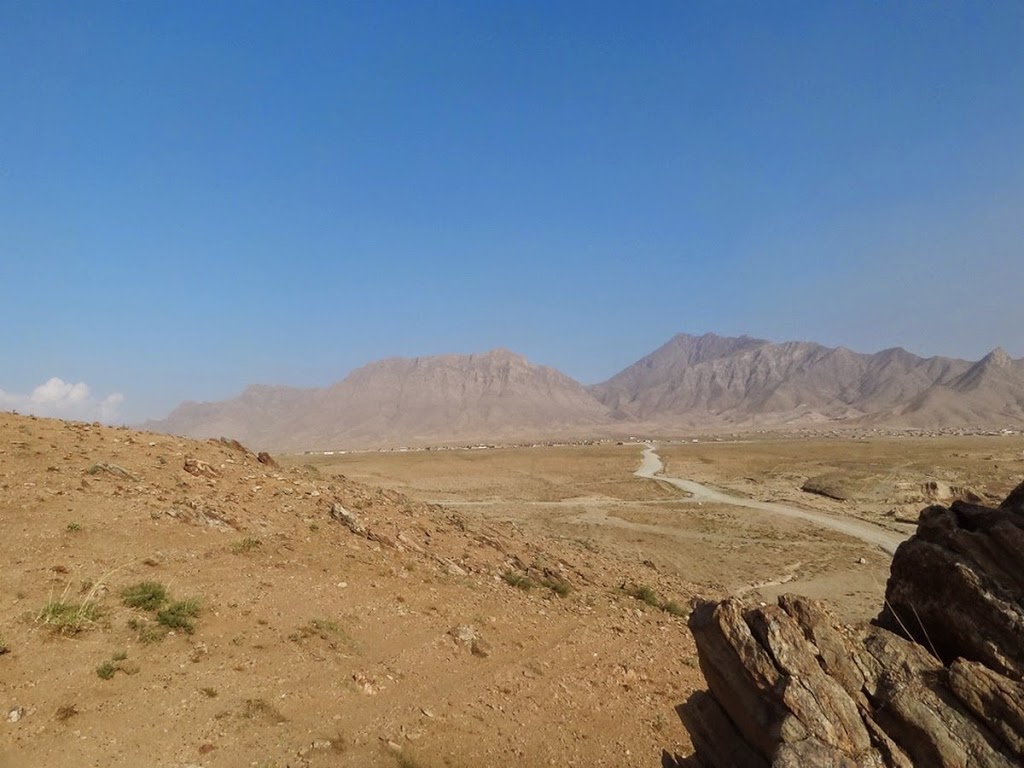For the past four years, first as a master’s student at the University of Leicester, and later as a PhD Student at Charles University in Prague. I have been studying the metamorphic basement of the Kabul Block in Afghanistan.
With its position within the extended Alpine-Himalayan Orogenic Belt, mountainous terrain and limited vegetation; Afghanistan provides a fascinating natural laboratory (WC) for geological study .The sheer volume of research produced up until the late 1970’s attests to this [1], as Afghanistan became arguably the most highly studied area within the Himalayas. However, the conflicts and instability that has plagued the country since then has left knowledge of the region largely fragmented or forgotten. While modern techniques such as the use of aerial and satellite imagery have enabled some advances, political and safety concerns have rendered fieldwork as being largely impractical. This was made startlingly apparent to me when my first trip to Afghanistan, in the summer of 2011, had to be cancelled at the last minute. The British Council, who were both funding the trip and providing accommodation, tragically had their headquarters attacked [2]two weeks before we were due to arrive.
Oddly, this failed to dissuade me from trying to visit, and I have since conducted fieldwork in both the summers of 2012 and 2013; collecting samples from the Kabul area and the Hindu Kush Mountains in the North. On both occasions I carried out this fieldwork together with my supervisor, Prof. Shah Wali Faryad, who is himself originally an Afghan national. My supervisor’s local knowledge meant that many of the logistical and safety concerns of working in such an area could be mitigated. During our visits we would stay in a guesthouse in the centre of Kabul and were driven to field localities by either a relative of my supervisor or accompanied by Dr. Amir Mohammad Mosazai, a friend from the Kabul Polytechnic University. To draw as little attention to myself as possible I was provided with traditional Afghan clothing whilst I was in the field, although admittedly this wasn’t an effective disguise.
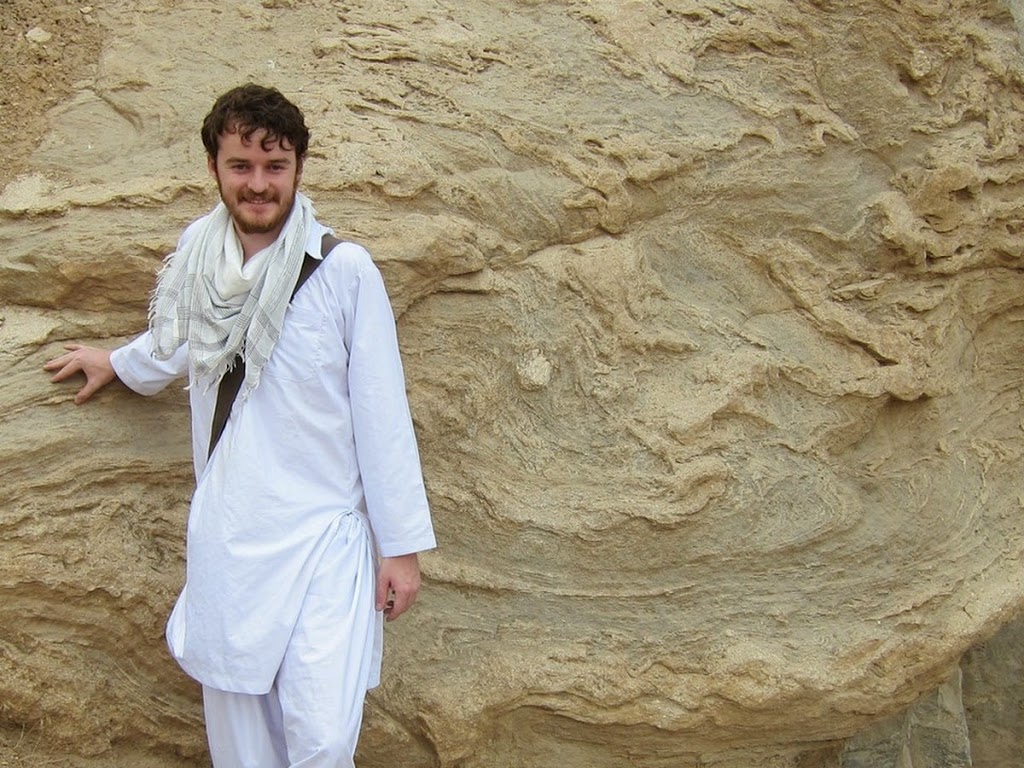 |
|
In the field dressed in the typical Afghan dress
|
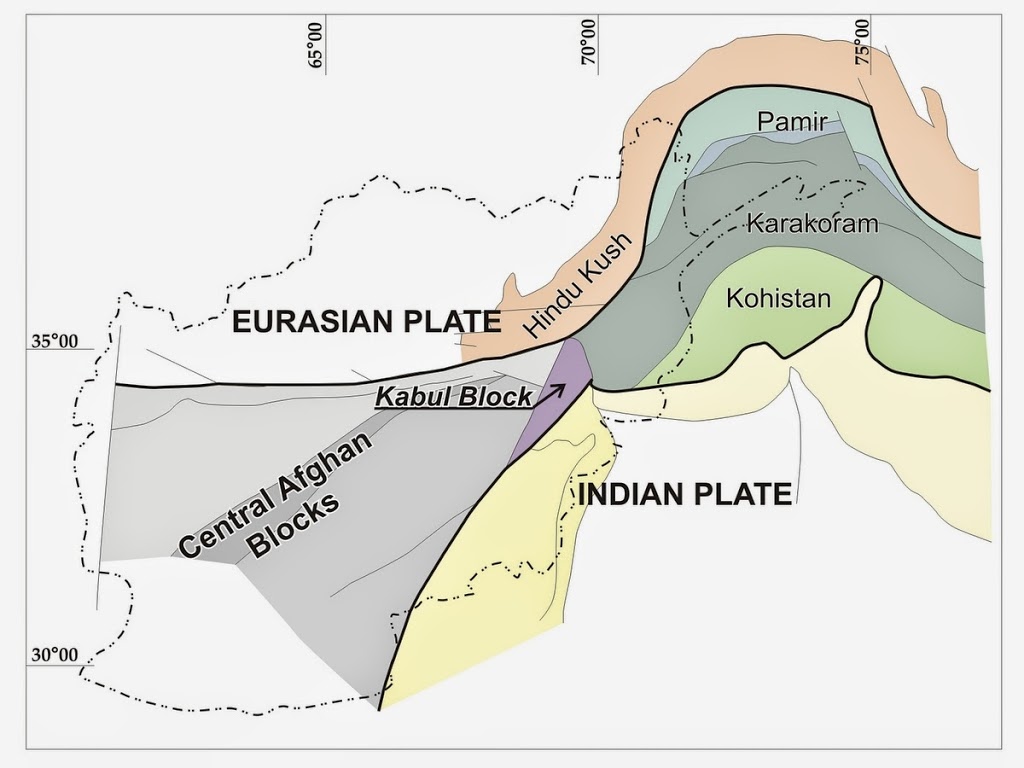 |
|
Simplified tectonic position of the Kabul block
|
The primary focus of my research is the metamorphic basement of the Kabul Block. These rocks crop-out in mountains that surround the city of Kabul, and therefore we are able to conduct most of the fieldwork in the vicinity of the city itself. The Kabul Block is an apparent enigma within the framework of Afghanistan. It is sited between the Eurasian and Indian Continents in a tectonic zone known as the Central Afghan Blocks. The Central Afghan Blocks are a series of micro-continental fragments which collided with Eurasia prior to the Indian collision. The Kabul Block, which is bounded by major strike slip faulting and ophiolitic complexes, is often thought to have been the last of these tectonic fragments to collide. Furthermore, it contains some of the only quantifiably Pre-Cambrian known rocks from the Central Afghan Blocks.
We carried out a number of traverses through the mountains around Kabul City investigating areas of interest highlighted in old geological maps held at the Afghan Geological Survey. The basement rocks consist mostly of gneiss, schist and migmatites but we have also discovered pockets of high temperature granulites and have been able to show from textural relations and age dating that they have undergone a complex polymetamorphic evolution during the Proterozoic, but exhibit little or no evidence for Alpine tectonics associated with the Indian collision.
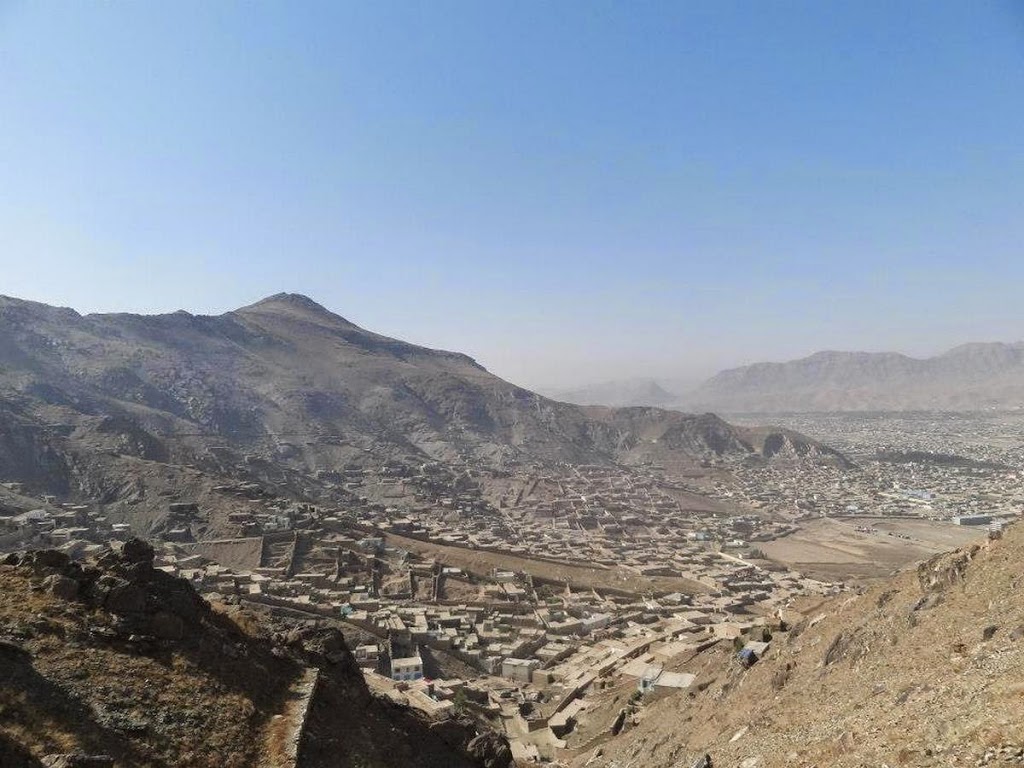 |
|
Looking down on Kabul from the outcrops
|
In addition to our own research activities during our visit in 2013 we also organised and participated in a geological conference, the International Hindu Kush Geosciences Conference [3], hosted at the Kabul Polytechnic University. This was the fourth iteration of an event first initiated in 2007 by my supervisor in Prague, Prof. Faryad. The conference provides an opportunity for students in Afghanistan to learn more about the geological activity in their country and to meet those participating in that activity. This proved a great success, as we welcomed contributions from the U.K., U.S., Germany, Czech Republic, Iran, Pakistan and Japan as well as several from Afghan scientists. In addition to those presenting their work, the meeting was attended by around 50 students from both the Kabul Polytechnic and Kabul University. While only a few of the presentations tackled purely scientific questions including tectonics, palaeontology and magmatism. There were a number of presentations and discussions tackling more applied problems relating to Hydrogeology, Industrial Mining and Mineral Deposits, and Engineering Geology, that will be vital to the future development of Afghanistan.
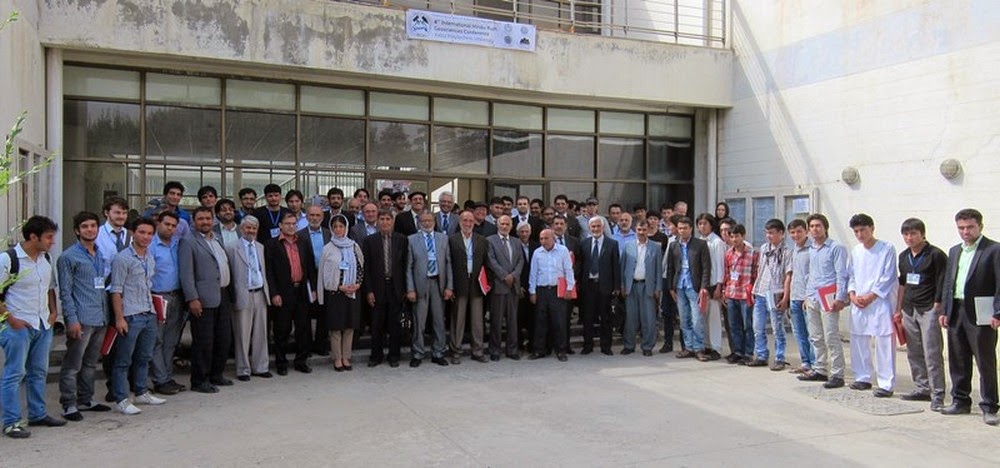 |
|
Participants at the International Hindu Kush Geosciences Conference
|
As the foreign troops are gradually withdrawn from the country in the coming years, Afghanistan could descend into yet more civil strife, or could emerge as a as a stable developing country. If they are to achieve this then geosciences will play a leading role. Knowledge of the occurrence and distribution of mineral and industrial resources could be a major potential driver for wealth. While the management of land and water resources will become increasingly important in addressing future challenges.
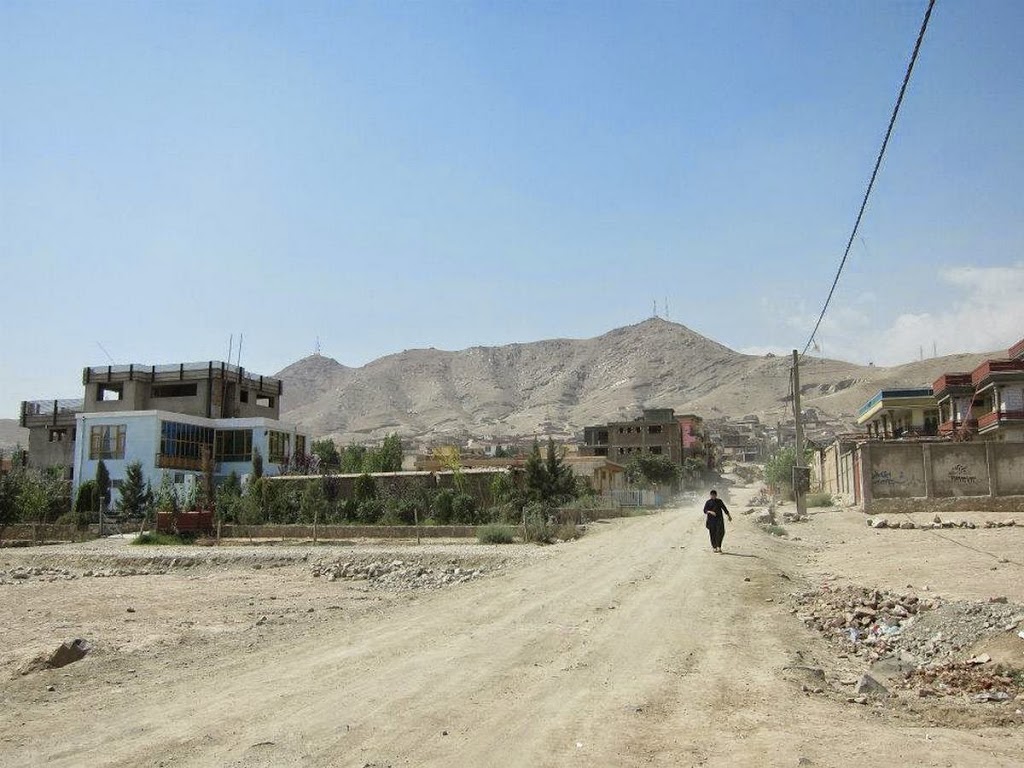 |
|
View of the mountains that surround the city from a street in Kabul
|
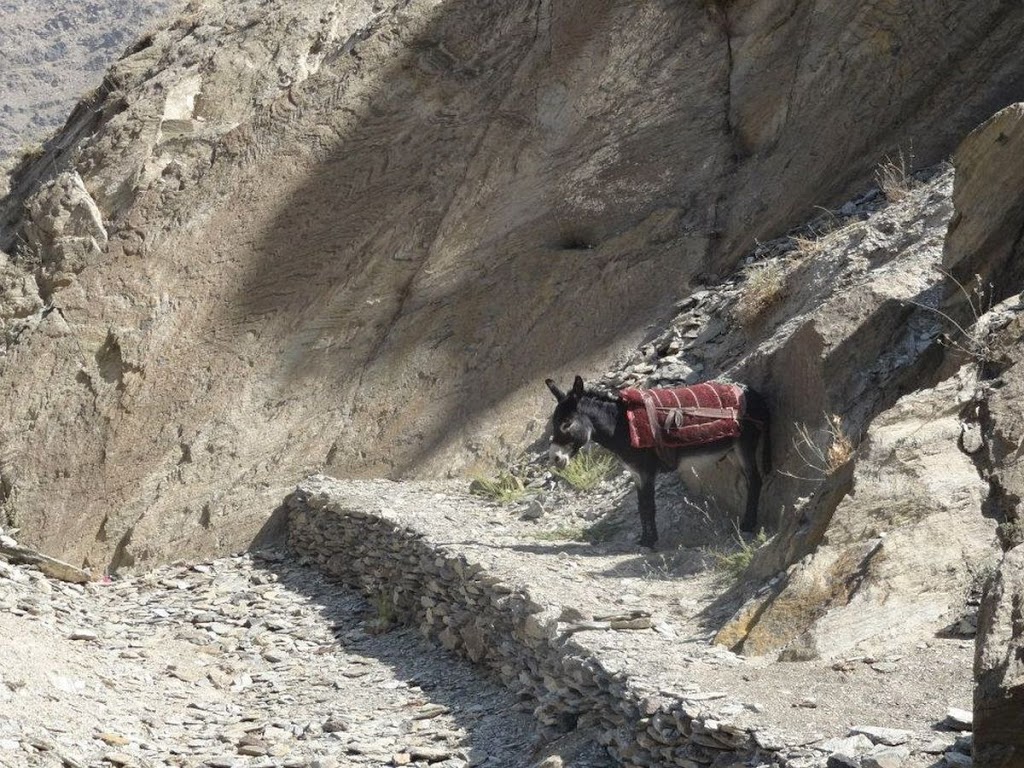 |
|
Notice the great folds behind the donkey!
|
 |
|
Enjoying Lunch with Dr. Mosazai from the Kabul Polytechnic University
|
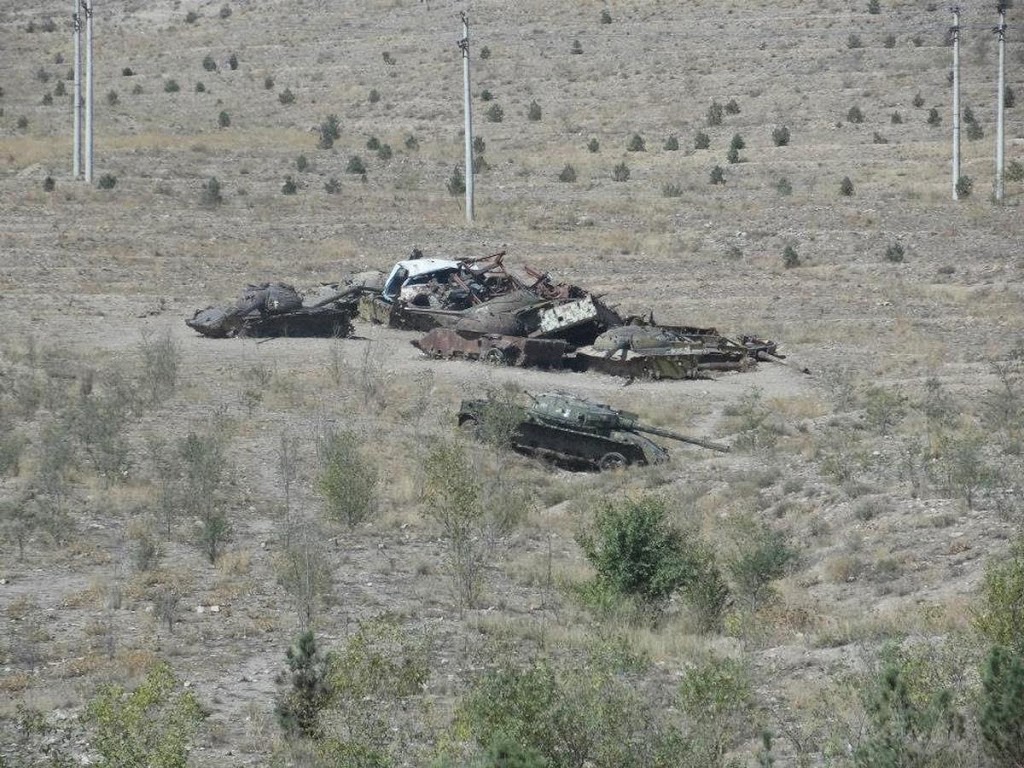 |
|
Reminders of the troubles of the past decades
|
 This work is licensed under a Creative Commons Attribution-NonCommercial-ShareAlike 4.0 International License.
This work is licensed under a Creative Commons Attribution-NonCommercial-ShareAlike 4.0 International License.








![]() This work is licensed under a Creative Commons Attribution-NonCommercial-ShareAlike 4.0 International License.
This work is licensed under a Creative Commons Attribution-NonCommercial-ShareAlike 4.0 International License.
